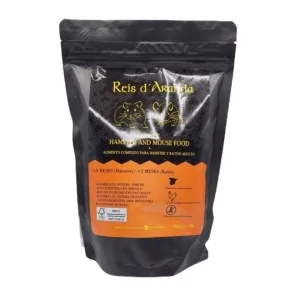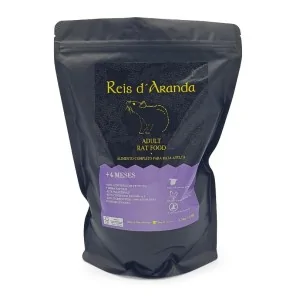The Tornjak originated from genetically homogeneous, almost extinct, indigenous shepherd dogs. These dogs have...
HOW TO PROPERLY MAINTAIN THE NATURAL FEED FOR MY RAT, MOUSE OR HAMSTER?
PRESERVING NATURAL FEED FOR RATS, MICE AND HAMSTERS
When we buy a feed and we look at the characteristics and conservation needs, we always find the same thing: "Keep in a cool, dry place, away from direct light and strong smells".
This, as far as industrial and/or pelletised feeds are concerned is true, you just have to keep the bag closed and follow the instructions but is it the same with natural feeds?
Not quite.
The first thing we need to learn is: What is a natural rat or hamster feed?
It is a completely natural feed, where the ingredients are whole or in small pieces, are recognisable to the eye and touch and have not been processed (pelleted or made into kibble). One example is REIS D'ARANDA's feed for rats and hamsters/mice, the first natural organic feed for these animals, made with ingredients suitable for human consumption and with dehydrated chicken meat as a source of animal protein (Chicken meat for my hamster or rat? Yes, yes, and we tell you why in the articles: "What should my rat eat" and "What should my hamster or mouse eat". ).
As far as the preservation of this type of feed is concerned, there is one detail that few people are aware of: regardless of the origin of the grains that make up the feed and their quality, it is very common to find weevils.
What are weevils? They are small, harmless insects that live in cereals and rice, including those of major brands of human foodstuffs. These insects reproduce rapidly, especially in hot weather, so we always recommend freezing natural feed once a week. How? Tightly sealed in a bag - many of them have a "zip" closure - for a whole night. This technique will eliminate any possible weevils and extend the life of our natural feed.
Are they dangerous? No, they are just annoying.
Another type of insect less common than the weevil is the codling moth, which lives in sweet foods and cereals, these insects can be especially annoying and enter packets through extremely tiny holes.
Prevention is essential, and in natural feed it lies in freezing; all of us professionals who work with this product keep it cold, and we always stress the importance of freezing it at home for 24 hours once a week. In this way, our natural feed will be in perfect condition and our pet will enjoy a healthy, varied and 100% suitable product.
Leave a comment
Log in to post comments














